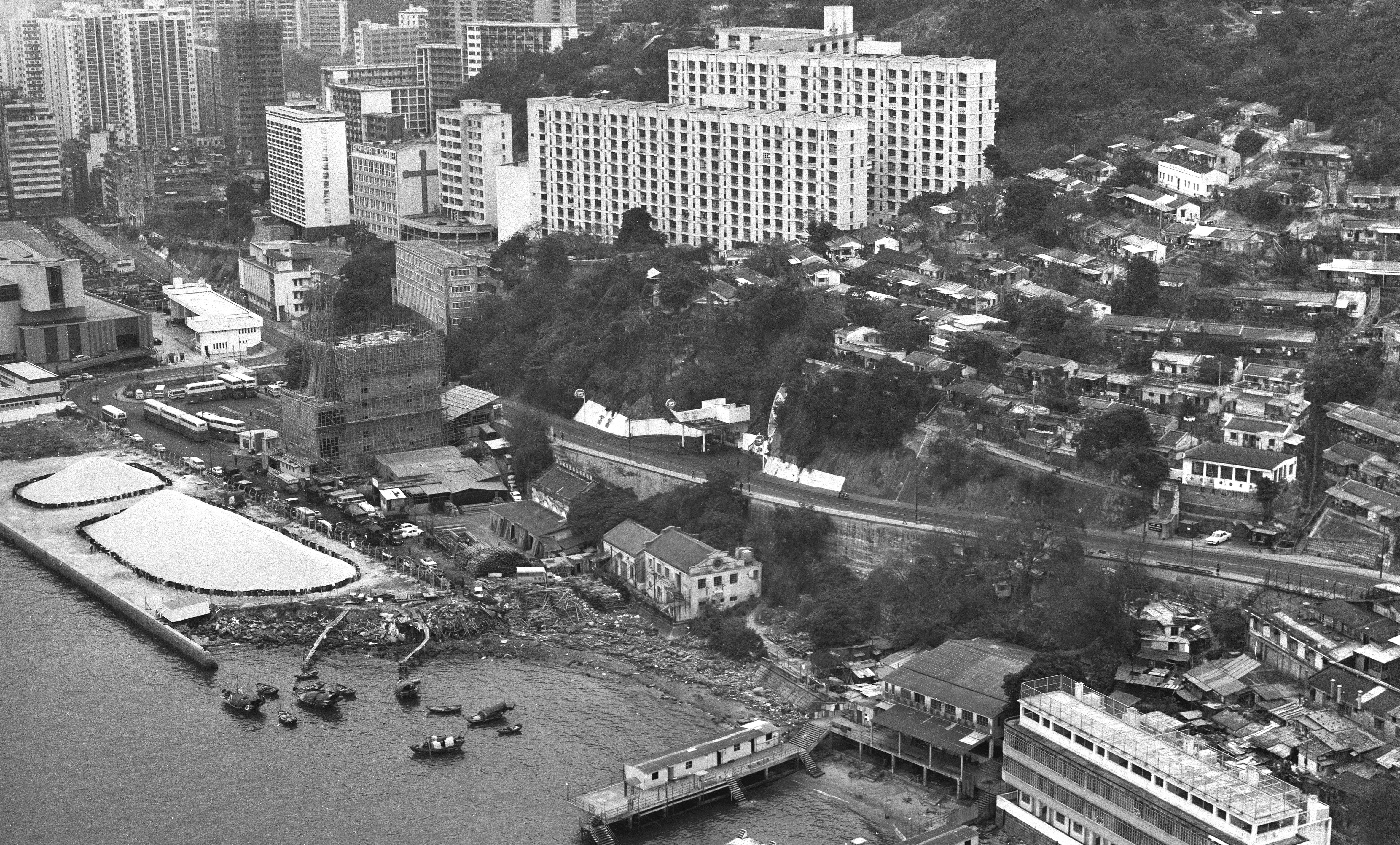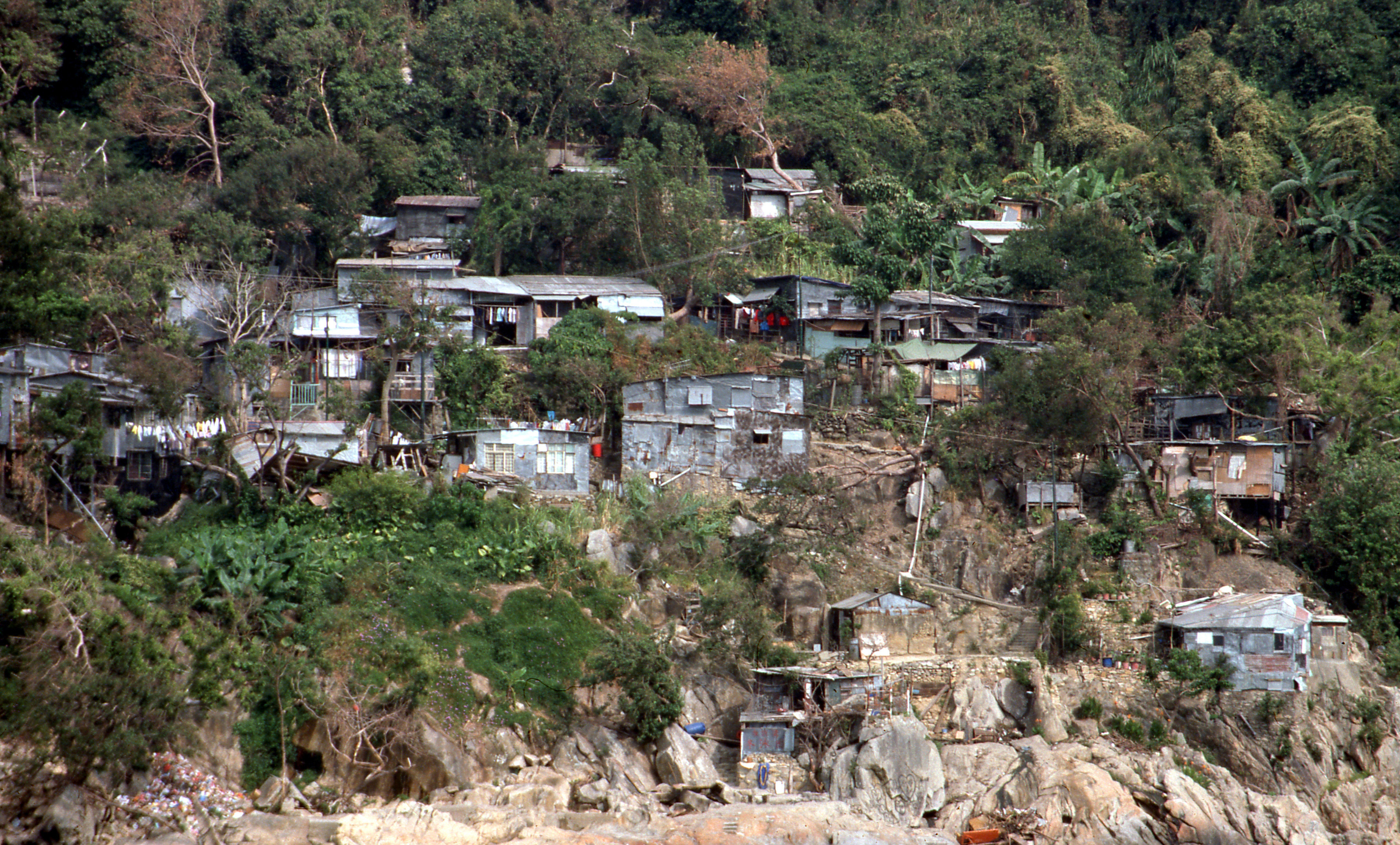Shelter: THE SQUATTERS and THE COTTAGES
1950s – 2000
In 1945, on the day World War II ended, Hong Kong had roughly 600,000 people, well below pre-war levels. By 1950, it had 2,200,000; by 1960, 3,000,000. The dramatic growth created staggering housing shortages; squatter settlements sprang up in many places. Near Mount Davis, after the removal of many squatters in the early 1950s, government officials worked with the private sector to build some 295 cottages.
Most refugees were poor and housed themselves however they could. Their more established neighbours often objected. Officials worried about sanitation and contagious diseases, fire risks, social effects of crowding, and potential threats to law and order. Although the squatters at Mount Davis were mostly removed in the early 1950s, squatting occurred at later dates, and even into the 1980s.
Meanwhile, the government divided land without permanent, authorized buildings into three types of housing zones: (1) “permitted” areas, where the government could ensure that a certain number of homes meeting minimum standards were built, to be bought or leased by people meeting employment and other standards; (2) “allowed” areas, where people could build their own housing as long as it met certain physical standards (lower quality than permitted housing, but better than most squatters’ shacks); and (3) areas where new housing was forbidden. Mount Davis had land in each category, but it was marked for less development than many other areas.
Mount Davis’ largest “permitted” area – slightly northeast of here, near the former Tung Wah Smallpox Hospital – became the site of the Mount Davis Resettlement Cottage Area called Kung Man Tseun, also known as Citizens’ Village. Most construction was completed by late 1952, and families had begun moving in earlier in that year. By 1954, roughly 250 cottages had 1,539 official residents; by the 1970s, the cottages probably housed over 2,000. Most early residents of Citizens’ Village were refugees; some had already lost makeshift homes in the huge Shek Kip Mei fire (December 1953). Their cottages at Mount Davis were fairly basic. They were less than 400 square feet; none had running water or indoor toilets until after 1990. Still, they were much less crowded and more comfortable than the public resettlement blocks, which housed almost one-third of Hong Kong residents by the mid-1960s (and where some families of five had only 120 square feet). Many cottagers made improvements. A neighbourhood welfare association, founded in 1955, provided various services: aid to the elderly and poor, student scholarships, classes for adults, some Chinese and Western-style medical services, and a low-cost pre-school. Former residents recall a safe, closely-knit neighbourhood.
Another settlement, called Hoi Pong Tseun or Seaside Village, developed in the “allowed housing” area a bit further down the hill. The houses were built by the residents themselves, using wood and sheet metal, rather than by contractors using more durable materials, such as cement. The first few houses appeared in 1951, but most came later. Some residents had been displaced by the clearance of squatter settlements elsewhere, some by fires or by other events. Eventually, the village also reached over 2,000 inhabitants. Seaside Village was a poorer community than Citizens’ Village. Some residents fished, some ran small retail stores, while others worked in factories. At first, the settlement had no utilities or postal service; until about 1970, most of the teenagers did not attend middle school. Nonetheless, it became a close-knit community which created various organisations to improve the site and help its residents. The village endured until 1984, when dangerous conditions following Typhoon Ellen (in 1983) led the government to remove all wooden houses from the area.
Over time, many people left Citizens’ Village, too – especially those who became more prosperous – and some cottages were torn down after they were damaged in landslides. In 2000, what remained of the village was condemned, although over 100 families still lived there. Many former residents remain in touch, however, and the village’s Neighbourhood Welfare Association, now in Kennedy Town, continues to operate. High-rise public housing is planned for the site (to open beginning in 2027-28) – a reminder that housing of all kinds is always in demand in Hong Kong.





